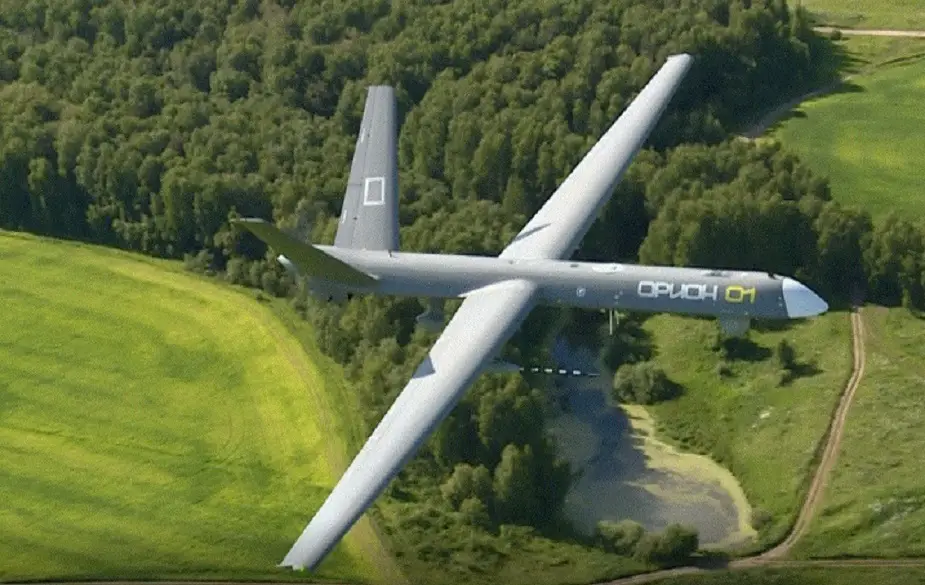Breaking news
Orion UAV can perform ice reconnaissance in the Arctic.
The cutting-edge Orion unmanned aerial vehicle (UAV) developed by Kronshtadt will be able to perform ice reconnaissance in the Arctic and the Antarctic, CEO of the drone developer Sergei Bogatikov told TASS in an interview.
Follow Air Recognition on Google News at this link
 Orion MALE UAV (Picture source: KT Group)
Orion MALE UAV (Picture source: KT Group)
"The Orion UAV is one of the most reliable drones globally in its class. It is capable to function in the temperature range from minus 50 to plus 50 [degrees Centigrade] and fly in conditions of short-term icing on account of a unique anti-icing system developed by Kronshtadt. The system has triple backup of all key systems. All these points taken together make it possible to use the system in the most harsh climatic conditions, from dry and hot deserts and damp jungles to the Arctic and the Antarctic," the top manager said.
One of key tasks is monitoring and control of navigation in the region of the Northern Sea Route, Bogatikov added.
About Orion UAV
Orion has a normal aerodynamic scheme with a 16-meter wing in the middle and V-shaped tail fins. Maximum takeoff weight is 1200 kg. The drone and mechanisms are made of carbon plastic composite materials to decrease the glider weight. Vacuum infusion technology was introduced. The drone has an electric impulse anti-icing system for operation in low temperatures.
A piston engine is in the tail to rotate and push a two-blade propeller. APD-115T engine was designed by Itlan Company and is likely an analogue of the Austrian Rotax 914 of 115 HP used in various drones, including US heavy Predator.
AV-115 adjustable pitch propeller was designed by the Russian Aerosila Company. It is the first in the family of highly effective drone propellers.
Orion can fly 24 hours at altitudes of 7500 meters. Its communication system was designed by Luch Bureau in Rybinsk. The range is 250 km. The drone takes off and lands automatically as an airplane with three retractable wheels.
It can carry a 200-kg payload, including the multichannel MOES stabilized electronic monitoring system. It was designed by Precision Instrument-Manufacturing System Corporation to detect and track targets day and night and provide guidance for weapons.
The drone can carry a radar or a photo survey unit, as well as reconnaissance and electronic warfare means. The equipment is accommodated in a compartment under the central fuselage.
© Copyright 2021 TASS. All rights reserved. This material may not be published, broadcast, rewritten or redistributed.



















